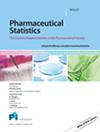Comparing various Bayesian random‐effects models for pooling randomized controlled trials with rare events
IF 1.4
4区 医学
Q4 PHARMACOLOGY & PHARMACY
引用次数: 0
Abstract
The meta‐analysis of rare events presents unique methodological challenges owing to the small number of events. Bayesian methods are often used to combine rare events data to inform decision‐making, as they can incorporate prior information and handle studies with zero events without the need for continuity corrections. However, the comparative performances of different Bayesian models in pooling rare events data are not well understood. We conducted a simulation to compare the statistical properties of four parameterizations based on the binomial‐normal hierarchical model, using two different priors for the treatment effect: weakly informative prior (WIP) and non‐informative prior (NIP), pooling randomized controlled trials with rare events using the odds ratio metric. We also considered the beta‐binomial model proposed by Kuss and the random intercept and slope generalized linear mixed models. The simulation scenarios varied based on the treatment effect, sample size ratio between the treatment and control arms, and level of heterogeneity. Performance was evaluated using median bias, root mean square error, median width of 95% credible or confidence intervals, coverage, Type I error, and empirical power. Two reviews are used to illustrate these methods. The results demonstrate that the WIP outperforms the NIP within the same model structure. Among the compared models, the model that included the treatment effect parameter in the risk model for the control arm did not perform well. Our findings confirm that rare events meta‐analysis faces the challenge of being underpowered, highlighting the importance of reporting the power of results in empirical studies.比较各种贝叶斯随机效应模型,以汇总具有罕见事件的随机对照试验
由于罕见事件的数量较少,对罕见事件进行荟萃分析在方法上面临独特的挑战。贝叶斯方法通常用于合并罕见事件数据,为决策提供信息,因为这种方法可以纳入先验信息,并处理零事件的研究,而无需进行连续性校正。然而,人们对不同贝叶斯模型在汇集罕见事件数据方面的比较性能还不甚了解。我们进行了一次模拟,比较了基于二叉-正态分层模型的四种参数化的统计特性,并使用了两种不同的治疗效果先验:弱信息先验(WIP)和非信息先验(NIP),使用几率比指标汇集罕见事件的随机对照试验。我们还考虑了库斯提出的贝塔二叉模型以及随机截距和斜率广义线性混合模型。模拟方案根据治疗效果、治疗组和对照组之间的样本量比例以及异质性程度而有所不同。使用中位偏差、均方根误差、95% 可信区间或置信区间的中位宽度、覆盖率、I 类误差和经验功率对性能进行评估。两篇综述对这些方法进行了说明。结果表明,在相同的模型结构中,WIP 优于 NIP。在比较的模型中,将治疗效果参数纳入对照组风险模型的模型表现不佳。我们的研究结果证实,罕见事件荟萃分析面临着幂次不足的挑战,这凸显了在实证研究中报告结果幂次的重要性。
本文章由计算机程序翻译,如有差异,请以英文原文为准。
求助全文
约1分钟内获得全文
求助全文
来源期刊

Pharmaceutical Statistics
医学-统计学与概率论
CiteScore
2.70
自引率
6.70%
发文量
90
审稿时长
6-12 weeks
期刊介绍:
Pharmaceutical Statistics is an industry-led initiative, tackling real problems in statistical applications. The Journal publishes papers that share experiences in the practical application of statistics within the pharmaceutical industry. It covers all aspects of pharmaceutical statistical applications from discovery, through pre-clinical development, clinical development, post-marketing surveillance, consumer health, production, epidemiology, and health economics.
The Journal is both international and multidisciplinary. It includes high quality practical papers, case studies and review papers.
 求助内容:
求助内容: 应助结果提醒方式:
应助结果提醒方式:


